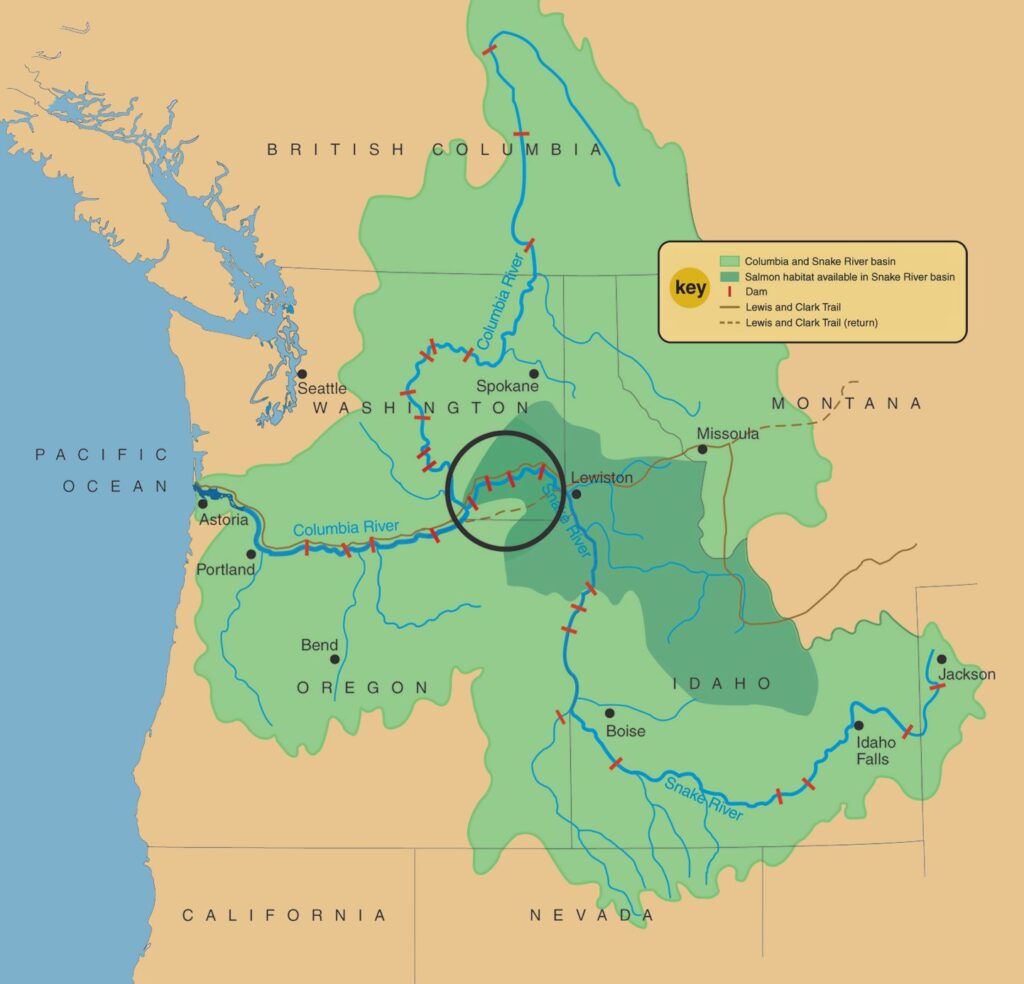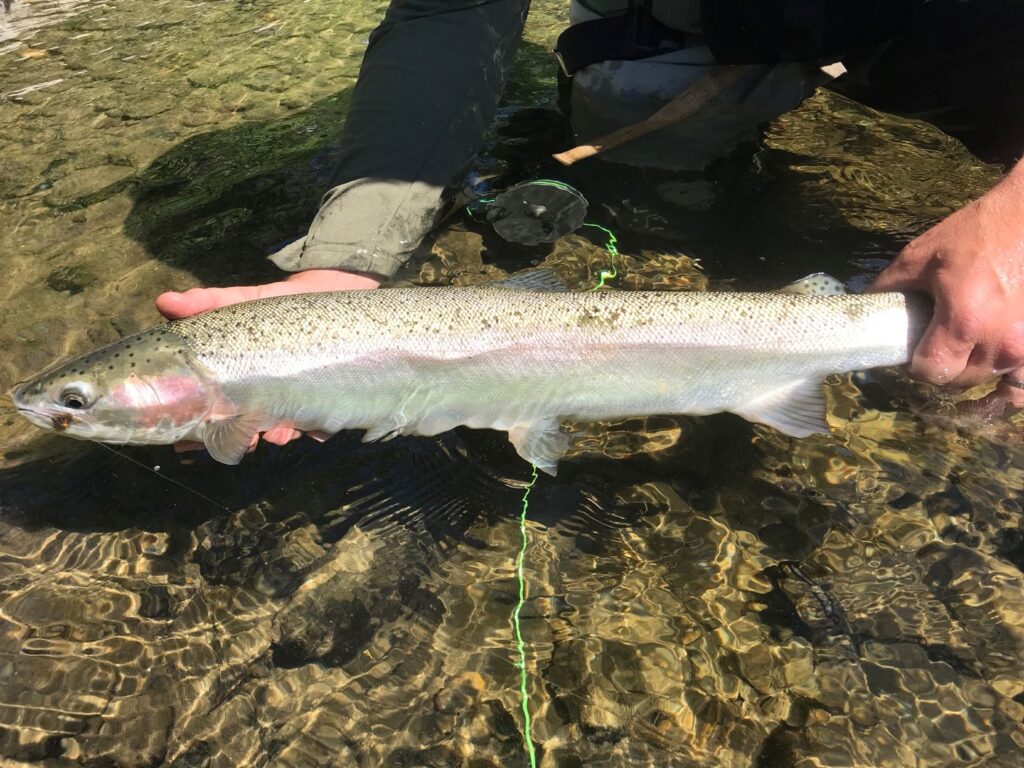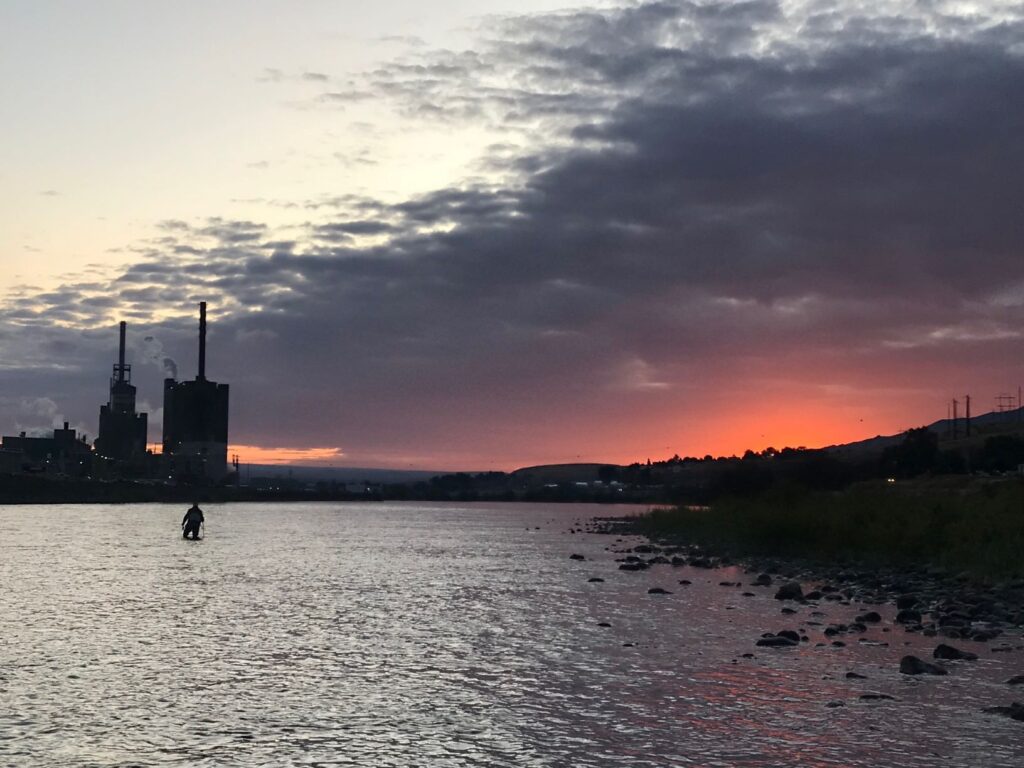By Sam Mace
For decades, federal agencies and Northwest elected leaders have failed to take meaningful actions to reverse the steady declines of Snake River wild salmon and steelhead. Anglers, river advocates, and Tribes have watched these irreplaceable fish decline to a fraction of historic numbers. For many of us, it has been a slow, sustained heartbreak.
Fisheries scientists have long told us that any effective plan to restore wild salmon and steelhead to healthy, fishable numbers must include removal of the four lower Snake River dams to allow salmon easier access into the 5,000+ miles of pristine upstream river habitat. Orca scientists also tell us that the best single action we can take to provide more Chinook salmon to starving Puget Sound orca is to restore the Snake River and its populations of spring/summer chinook.

Proposed Columbia Basin Fund Brings New Hope for Fish and Communities
There is hope today. Earlier this year Congressman Mike Simpson, an Idaho Republican, unveiled a bold proposal to restore salmon by removing the lower Snake dams and replacing the transportation, energy and other benefits with new investments. Called the Columbia Basin Fund, the $33.5 billion initiative calls for fundamental changes in how salmon are managed. If the price tag sounds high, consider that we’ve spent $17 billion already on measures that haven’t worked.
Clarkston and Lewiston would be given funds for waterfront development and a technology education center. Eastern Washington would get a new National Recreation Area along a free-flowing lower Snake River, where more than 14,400 acres of land will be restored. New boat launches, campgrounds, and hiking trails would be established, a huge boon for outdoor recreation close to Spokane.
Simpson’s proposal also supports funding for fish passage over a set of dams that completely block salmon migration today. It would support the visionary work of the Spokane and Colville Tribes to re-establish salmon above Grand Coulee Dam into rivers devoid of salmon for decades.
Simpson’s Proposal is a Work in Progress
Rep. Simpson released his draft as a starting point—and invited other Northwest politicians to work with him to improve it. While river advocates have applauded Simpson’s courage and genuine desire to restore salmon, his proposal is not perfect. There are serious concerns, for example, about broad restrictions on future litigation in the basin. But his approach—crafting a dam removal plan that gives all communities and stakeholders what they need to thrive—is the right one. And it has transformed discussions across the Northwest.
With a big infrastructure bill anticipated to move forward in Congress and with President Biden in the White House, 2021 is the year to act. Support from Washington State’s Senators Patty Murray and Maria Cantwell is essential. As senior members of a Democrat-controlled Senate, our senators are at the apex of their influence today. Now is the time to act. So far, unfortunately, they have largely ducked the issue, and Senator Cantwell recently dismissed Simpson’s proposal in the media. Criticism is fine. Inaction is not. If Cantwell and Murray have concerns with Simpson’s first cut, then we should hope they would offer improvements or come up with a new plan.

The Clock Is Ticking for Snake River Salmon & Steelhead
The fish can’t wait any longer. Fish returns will be bleak in 2021—some of the lowest ever. Just 8,150 wild spring Chinook are predicted to return to the Snake basin this year. Steelhead returns are likewise in steep decline. And while we celebrated three new orca calves this year, only 75 whales remain. They won’t survive without more salmon to eat. Without urgent action, we will lose them forever.
Fortunately, political momentum is growing. While Gov. Inslee has not taken a position yet, Oregon Gov. Brown has endorsed Simpson’s effort. Eleven Columbia Basin Tribes including the Nez Perce, Yakama, Umatilla, Spokane, Colville, and Kootenai Tribes recently released a statement praising Simpson’s approach to invest in the region and restore salmon to healthy, harvestable numbers.
The Time to Act Is Now
What will it take to bring salmon home? In solidarity with tribes, it’s time for anglers, river advocates, business owners, and community leaders to call on our senators and other elected leaders to take decisive action. We have a once-in-a-generation opportunity to restore salmon abundance, invest in the Inland Northwest communities and infrastructure, honor our promises to Native American tribes, and leave a better future for generations to come.
Right now, Senators Cantwell and Murray need to hear from you and your friends and family. Call and write them today. Ditto for Rep. Cathy McMorris-Rodgers—let them know that you, their constituents, want real and lasting solutions for our salmon and orcas, for tribes, and for all of us. Go to wildsalmon.org for action links and to learn more about the “Columbia Basin Fund.” To view what a restored river could look like go to Tinyurl.com/snakerivervision.
Sam Mace is the Inland Northwest Director for Save Our Wild Salmon. Reach her at [email protected].

Read more stories about this issues in our archives: https://outthereoutdoors.com/tag/save-our-wild-salmon/
[Feature photo by Josh Mills.]













